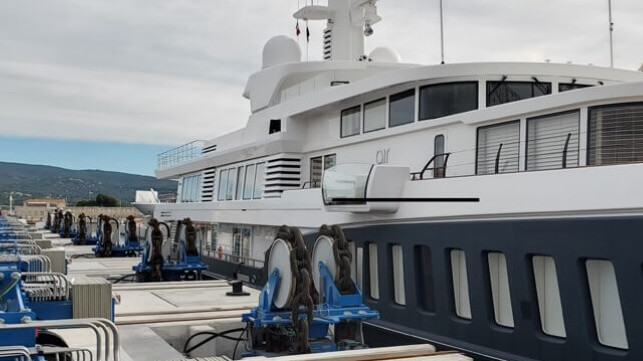Successfully Planning A Shiplift to Expand Shipyard Capacity

Need to increase your shipyard’s capacity but not sure where to start? Taking time at the very start of shiplift design to understand six core considerations will save you time, money, and avoid costly mistakes. Partnering with Bardex as your subject matter expert early in the design process will result in well-executed infrastructure investments that simultaneously become regional economic drivers and allow those regions to contribute to decarbonization sustainability.
Chain Jack Shiplift Animation from Bardex Corporation on Vimeo.
The six core considerations:
1) Geology – What are the soil conditions? Geology drives civil works cost. Civil works cost drive project costs. Controlling overall project costs begins with understanding local geology.
2) Geometry – Is this a new yard with flexibility in building layout, or are there existing constraints when maneuvering ships to the work areas? Perhaps the channel access has features that affect the layout?
3) Target Market – What types of ships is this shiplift intended to lift? Are their geometries and densities relatively uniform? Do these ships have unique features that require special consideration?
4) Operational Objectives – Refit, inspection, or new builds? Maybe all of the above? Will your region be experiencing an increase in demand to maintain vessels related to offshore wind? Have you considered propulsion and treatment system modifications necessary to meet new regulatory and sustainability requirements for vessels operating in your region?
5) EPC Plan – Once the facility is designed, how best to implement the plan? What resources are available in your region to support the implementation of your project?
6) Financial Plan – You know you need more capacity, but how do you prepare to present the best business case to management? Bardex can assist you with data analytics that provide insight into the regional demand for service.
There are also topics universal across any shiplift solution that we encourage potential clients to investigate for themselves during their vendor selection journey. We are avid transparency supporters and look forward to honest conversations around our technology and track record:
• Ask about safety and annual incidents. Which shiplift system has never dropped a ship?
• While Capex is important, Opex can vary greatly. Find out which parts need to be replaced and at what time intervals. How often does it need to be maintained? How much downtime will it incur?
• Does the system require grease? How often does it need to be reapplied? How much does the grease cost? How much downtime is required for its application? What studies have been performed to prove its safety and biodegradability?
• Does the system have to be disassembled for class inspections?
Exploring these questions when planning a new shiplift or a retrofit of a legacy wire rope system is essential for success, but you don’t have to answer them alone. Chances are you didn’t get to where you are without a mentor – don’t assume you’ll arrive at the best solution for your goals without a trusted advisor.
At Bardex, we don’t just lift ships. We lift communities and regional economies.
This content is sponsored by Bardex. For more information visit the company online.

that matters most
Get the latest maritime news delivered to your inbox daily.
The opinions expressed herein are the author's and not necessarily those of The Maritime Executive.
